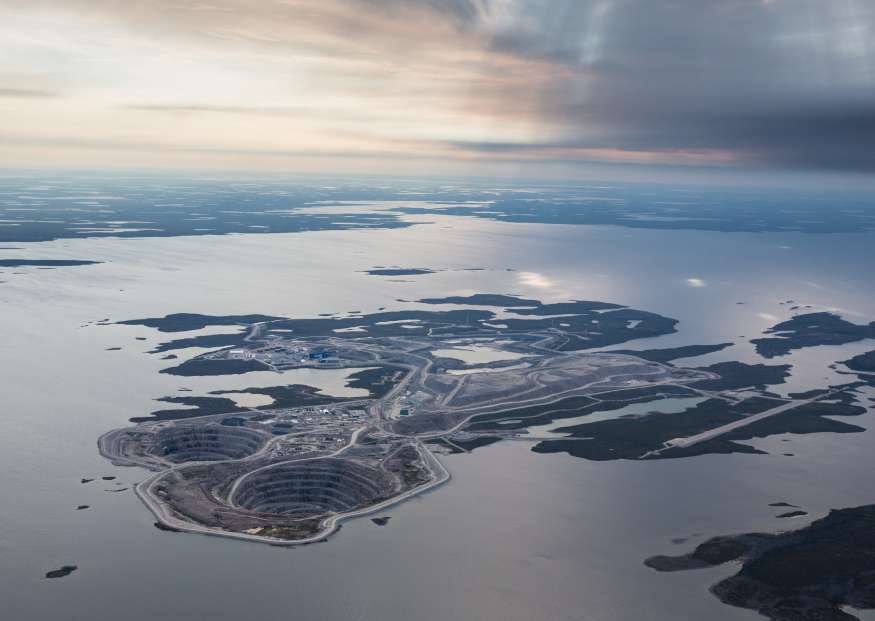
The biggest solar power plant in Canadian territories will be constructed at Rio Tinto’s completely owned and operated Diavik diamond mine. More than 6,600 solar panels will be used in it, producing 4,200 megawatt hours of carbon-free electricity per year for the mine.
During closure operations, which will last until 2029, the solar power plant will supply up to 25% of Diavik‘s electricity. The operation’s commercial output is anticipated to stop in early 2026.
The building will use bi-facial solar panels that can produce energy from both direct sunshine and the light reflected off the snow that blankets Diavik for the most of the year. It will reduce the amount of diesel used at the location by about one million liters annually and emissions by 2,900 tonnes of CO2 equivalent, which is equivalent to removing the emissions of 630 cars.
According to Diavik Diamond Mine President and Chief Operating Officer Angela Bigg, “I am delighted that we will be significantly increasing our renewable power generation with the largest solar power plant in Canada’s northern territories at the Diavik Diamond Mine.”
The installation of a solar power plant will greatly increase Diavik‘s production of renewable energy, which already includes a wind-diesel hybrid power plant that generates the majority of the site’s electricity and has a capacity of 55.4 MW.
The project is financed by CAN$3.3 million from the Large Emitters GHG Reducing Investment Grant program of the Government of the Northwest Territories and CAN$600,000 from the Government of Canada’s Clean Electricity Investment Tax Credit.
In order to identify how its renewable energy infrastructure will best assist the area after closure, Diavik is collaborating with the Government of the Northwest Territories and community partners.
Rio Tinto is moving forward with decarbonization programs across all of its global operations with the goal of achieving net zero emissions across all of its operations by 2050 and a 50% reduction in Scope 1 and 2 GHG emissions by 2030.
The solar power plant will begin construction in the upcoming weeks, and it will be fully operational by the first half of 2024.
